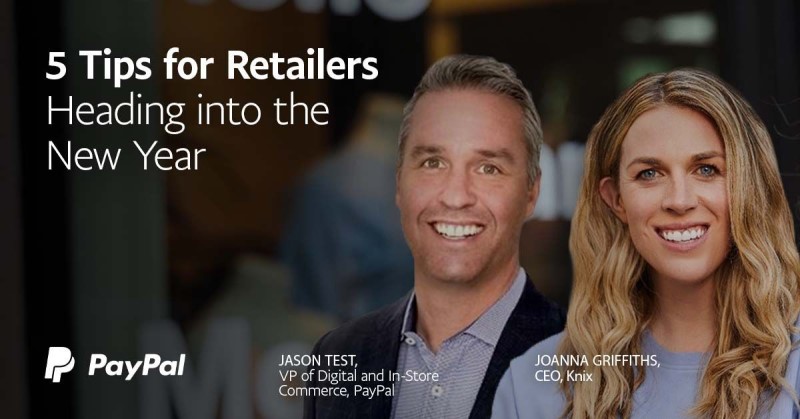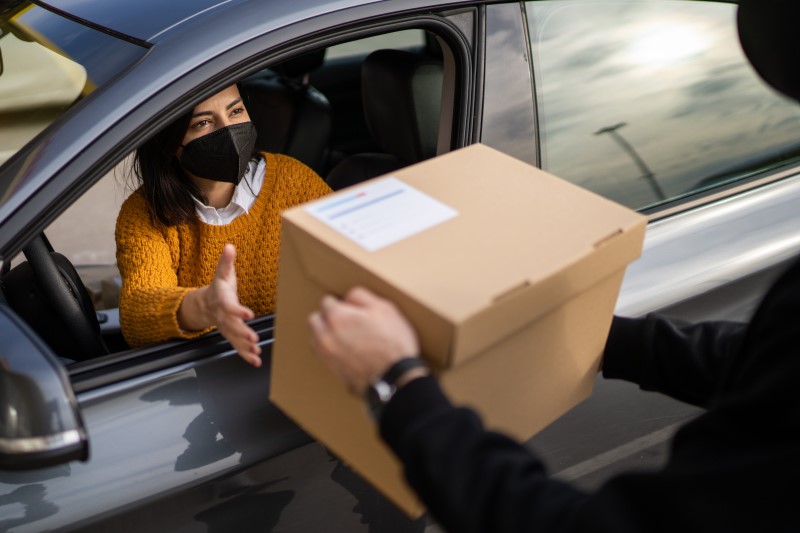Five Tips for Retailers Heading into the New Year
January 13, 2022
This year, retailers, big and small, are starting off once again with some degree of uncertainty as a result of the evolving pandemic. One thing we do know is that Canadians are comfortable and savvy online shoppers. In fact, a 2021 PayPal Canada study, titled “Trends & Spends” found Canadians across the country are spending about $2-billion more a month online.
In 2022, as competition online intensifies, retailers will without a doubt have to step up their e-commerce game. Here are five tips and trends from Knix CEO Joanna Griffiths and PayPal’s VP of Digital and In-Store Commerce Jason Test that could help take your business to the next level.
Use platforms that grow with your business
When the global shutdown hit in March 2020, some businesses focused on quickly getting up online and running to meet consumer demands but as time went on and businesses adapted to selling online, new e-commerce opportunities came up and now, the challenge is remaining at the forefront of a competitive landscape.
Being competitive means having access to important consumer insights and partners that help give your customers what they seemingly want – secure transactions, seller protection, flexible payment options and shopping rewards.
Jason Test says using a platform that can grow with your business is key to remaining competitive.
“Partnering with a platform like PayPal that has 400 million accounts around the world means a business has access to a global network of consumers and data to help them make informed decisions around retargeting. It also means that the company can help support you almost wherever in the world your enterprise conducts business.”
Finding the right partners allows people running the company to have one less thing to worry about, adds Joanna Griffiths, CEO of Canadian company Knix. The people at the helm of an enterprise should be focused on running the business while their ecommerce platform could help them take care of everything else from customer conversion to ensuring transactions are protected from fraud.
“We partner with the best and then we focus on what we do best,” she says.
Have a streamlined checkout process
A Mastercard Global Consumer Study that came out in 2020 found for 70% of Canadians, contactless payments are now their first choice whereas 47% are now using contactless payments more than they did before COVID-19 Pandemic. This gives us a key insight into how Canadians want to shop and pay for their purchases.
“From an enterprise standpoint, being able to offer customers the ability to pay how they want to pay can be the key to a successful checkout experience, whether it be with a digital wallet, with rewards, with a buy now, pay later solution, or even their PayPal balance, flexibility will always the be most important aspect for consumers,” Test says.
Joanna said her years running her online intimate-apparel company has proven just how important it is to have a streamlined checkout process as the final step in the sales funnel.
“You have to get as many people as you can on your site and get them to convert. In the land of infinite choice, getting people to the site is the hardest thing you can do, and then once you’re there, you should use every tool that makes sense for your customer,” she says. “E-commerce is all about removing frictions to purchase, so streamlining that final step is extremely important. It’s a smart business decision.”
Have an omnichannel strategy

Having an omnichannel strategy, which gives consumers a seamless shopping experience, helps put customer convenience first.
“Retailers need to act quickly to keep up with new consumer expectations and find opportunities in the micro-moments of a consumer’s shopping journey,” Test says. “Today’s consumer is digitally savvy and they expect their shopping experience to be seamless with all the tools and benefits of ecommerce at their fingertips. They want information about the product before they step foot in the store, they want to pay for it with a tap of their phone when they’re in the shop and then they want to be able to buy a different colour online when they come home. And if they’re not happy with their online purchase, they want to be able to return it in store without any hassle.”
Payments is a huge part of the omnichannel experience and customers want convenience, he adds.
“They want to pay how they want, when they want. They want their cards accessible with the touch of a button, they want flexible payment options, but most of all, they want to know that when they pay online, their payment information is secure, and that their purchases are protected.”
Furthermore, a successful omnichannel engagement strategy is fueled by consumer data and insights that give retailers a chance to develop an individualized approach to marketing and retargeting, he adds.
“PayPal has 400-million strong global network of merchant and consumer accounts. This allows us to retarget customers who have left items in the checkout cart through our Store Cash product. Through our recent acquisition of Honey, we can also engage consumers with store offers or discounts to encourage them to carry through with their purchase.
Work with partners that share your company’s values
More and more, companies are becoming increasingly comfortable speaking out on issues around human rights, self-empowerment, mental health and social justice.
Griffiths, whose company Knix has become known for its’ diverse and inclusive marketing, says
she keeps a critical eye on the companies she partners with.
“Consumers are really smart and empowered and so you have to use a critical lens with whoever you work with,” she said. “When we look at making a switch, (a company’s values) certainly is what makes us stay.”
“Today’s consumer is very engaged and they want to know that the companies they are dealing with and giving their money to are standing up for what’s right,” Jason agrees.
Don’t live in the past, focus on the Future
Regardless of whether a business was online before the pandemic or just embraced e-commerce last week, Test says it’s best to focus on preparing for the future success rather than dwelling on the past.
“Focus on what you can do today to get your business to where you want it to be,” he says. “It truly doesn’t matter what you were doing last week. What matters is that you are taking the necessary steps to set the business up for success for years to come.”
He advises that working with an e-commerce platform that’s flexible and easily adaptable to the company’s existing infrastructure will help make the most out of opportunities that come today and prepare you to create new opportunities for tomorrow.
Griffiths says focusing on the future is what has helped her company grow leaps and bounds.
When Knix first entered the intimate apparel space, it was being sold in department stores. Joanna made the bold move by pulling her products out of those stores and focused on building her brand online.
“Pulling out of the wholesale business and focusing online was scary and terrifying but it was the best decision we ever made,” she said. “We learned the importance of investing in the brand and building community, so that of all the competition, customers choose you.”
The content of this article is provided for informational purposes only. You should always obtain independent business, tax, financial, and legal advice before making any business decision.



